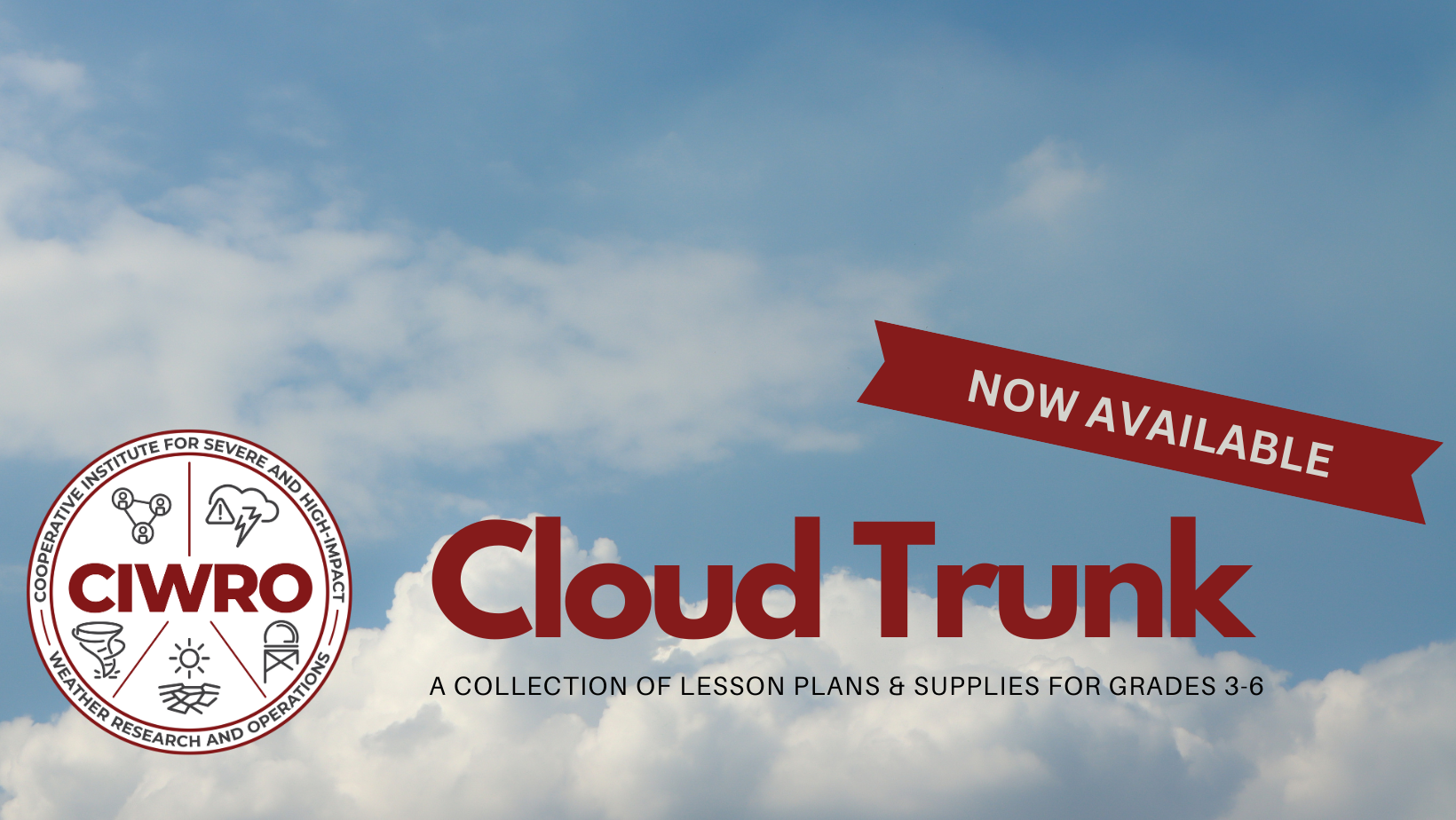Please resize your screen in order to view site.
Traveling Trunks
CIWRO's Traveling Trunk Program is part of our outreach to provide opportunities to educate, empower, and inspire students to learn more about the weather around them and consider career pathways in meteorology and related fields. These pre-assembled kits complete with lesson plans and supplies are available for loan for classroom teachers and have been called "Weather in a Box" by educators who have reviewed the materials.
Reserve a trunk by email (Pick up from the National Weather Center in Norman, OK): Annette.Price@ou.edu

Cloud Trunk for Grades PK-2
The early childhood Cloud Trunk is comprised of lessons designed to spark curiosity about clouds and rain through a guided inquiry lens. Students in grades PK-2 are encouraged to learn through play, wonderment, and meaning-making. Weather impacts everyone in a community, and clouds (or the absence of clouds) are Earth science phenomena that are part of students' daily lives.
Lessons can stand alone but are meant to complement each other for a comprehensive approach that incorporates multiple subject areas. These lessons are perfect for classrooms divided into stations or centers. You may wish to teach one or two lessons, or try them all! However, we suggest you start the unit by allowing students to go outside and gaze at the sky. Record what they notice, and allow them to answer their own questions through investigative prompts in the lessons.
Basic weather concepts repeated throughout the lessons include:
- What are clouds made of?
- How do clouds form?
- Why do clouds look different?
- Where does rain come from?
- What are some characteristics of water?
- Why is water important?
- What is the shape of a raindrop?
- Why do some clouds produce rain and others do not?


Cloud Trunk for Grades 3-6
The upper elementary Cloud Trunk is full of compelling questions and hands-on experiments to help students investigate clouds and their impact on their world through guided inquiry. Students begin by reviewing the basics of the water cycle and scaffolding that knowledge into a better understanding of the atmosphere, including transpiration, evaporation, condensation, crystallization and precipitation.
The trunk includes two lesson plan units designed to be implemented in three to four class periods each. Teachers may wish to shorten the unit or use the suggested extension activities to provide an even more robust learning experience.
Basic weather concepts repeated throughout the lessons include:
- What can clouds tell us about weather?
- Where does rain come from?
- Why do clouds look different? Can we categorize them?
- Can we re-create clouds indoors?
- What role do clouds play in art?
- What are clouds made of and how do clouds form?
- Besides ice and liquid water, what other types of water occur in the atmosphere? How do we know it exists?
- How does invisible water vapor turn into clouds we can see?
- How does a cloud produce rain? Why do some produce rain and others do not?
- How do scientists observe clouds and measure rain drops?
- What are the shapes of raindrops?

 Skip to main content
Skip to main content